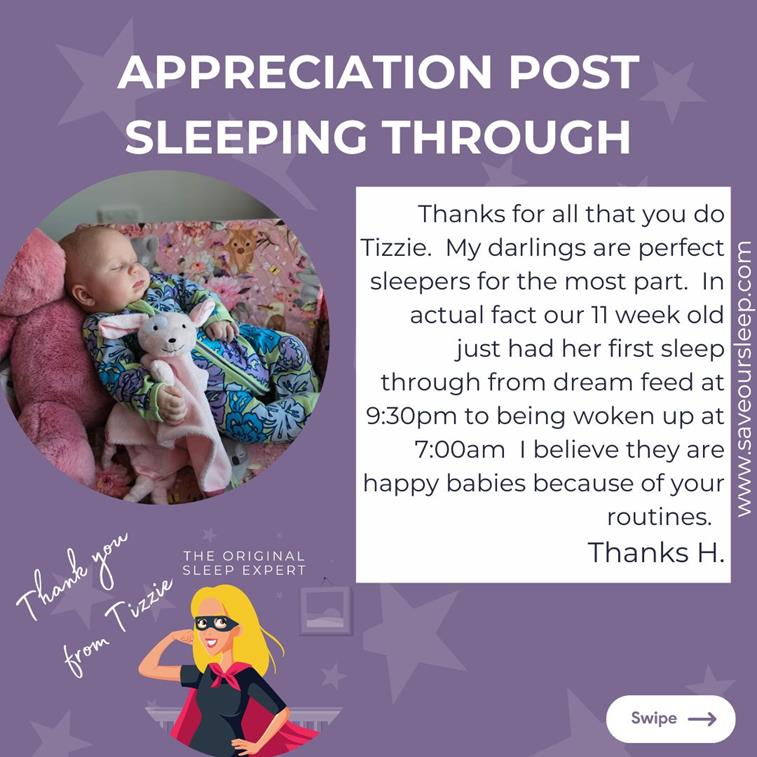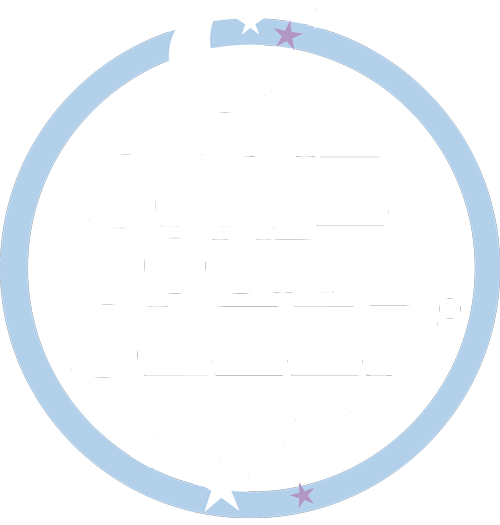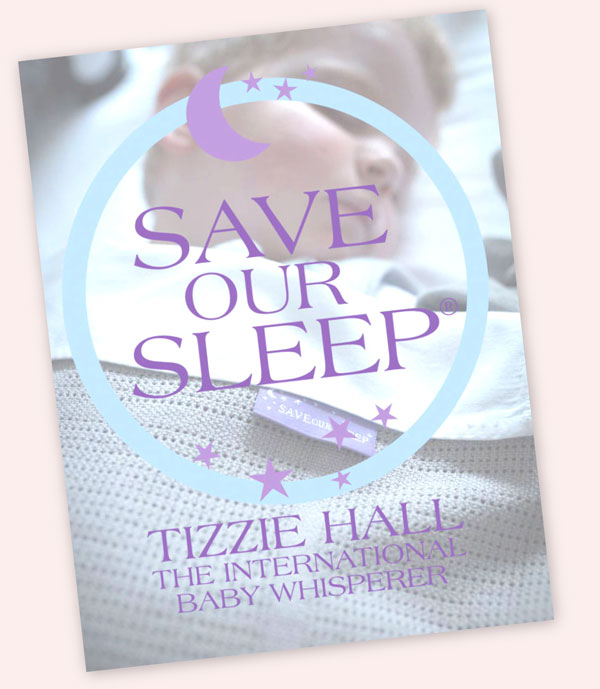Using one of my routines means your baby should cry rarely or not at all because he has no reason to. As a baby on one of my routines does not need to cry when he is tired or hungry, this makes parenting easier, as a lot of the guesswork is taken out.
However if your baby does cry, I feel it is very important for you to listen. Babies need to be listened to.
It is unfair on a baby to just desperately try to stop him from crying rather than try to interpret his cries. Put yourself in your baby’s place. Imagine you are sad and trying to tell a friend how you felt but, because your friend can’t stand your tears, she just keeps saying, ‘Come on, stop crying, it will be okay. Can I get you a drink?
Maybe something to eat will make you feel better?’ Think how you would feel. You would stop crying just to please your friend, but you wouldn’t feel any better because your problem wouldn’t have been shared or solved.
I believe we need to sit back and try to listen to our babies. Let them know it is okay to cry and tell us how they are feeling. We should not be teaching our babies to be quiet and bottle up their feelings, or to eat something to feel better or to solve a problem. This is why I believe my routines help a lot of parents to interpret their baby’s cries, because babies only cry for a few reasons in early life so the cause of the crying should be easier to find.
If your baby is crying and you are following one of my routines, you need to ask yourself why he could be crying. Could the cause be:
1. A wet or dirty nappy?
2. Hunger? If your baby is on the correct routine for his age and a feed is due within twenty minutes of when the crying started then yes, hunger could be the problem. Try to take your baby’s mind off the hunger and wait until the feed time. If all else fails then feed him early, but try to stretch him back slowly onto the routine over the next few feeds. If it is over twenty minutes until the next feed time it could be another problem.
3. Tired? If your baby didn’t sleep as long as normal at his last sleep or it is within twenty minutes of a scheduled sleep, tiredness could be the problem. I recommend you put him to bed early.
4. Wind? If your baby seems stiff and when you lie him down brings both knees up to his tummy, it could be wind. I suggest you sit and wind him. But before the next feed, read my information on colic and wind (chapter 3).
5. Thirsty? Your baby could be thirsty. If your baby is four months or older, try giving him a drink of water. This is a good habit to get into because water is very good for everyone. But as mentioned previously, never give a younger baby more than 30 ml between milk feeds. If your baby is bored, a drink of water might also entertain him and help him feel a bit better.
6. Hot or cold? Could your baby be hot or cold? The best guide is usually to dress babies in layers and put one extra layer on than you are wearing.
7. Bored? If your baby is not due for a feed or sleep, he could be bored. Try reading him a book or showing him a toy. Maybe he might just feel like a cuddle. Or, he might be in an uncomfortable position and moving him might help.
If you have covered all of the above, then your baby may have a different problem, maybe a pain brought on by food intolerance. You should talk to your doctor if the crying continues.
If the crying won’t stop
A crying baby can really try your patience. If you have tried everything and you just can’t get your baby to stop crying, you will probably start to feel quite tense and upset. This is understandable but will not help the situation. Your baby will pick up on your feelings and cry even more. There is no doubt that tender, loving care and sympathy from a calm, caring adult will reassure and help your baby at least to some extent. But if you are upset yourself, you may not be able to provide this comfort. If you are tense, or at the point where you can’t take any more, this is a danger signal and you shouldn’t ignore these feelings.
You may need to put your baby down in a safe place like his cot and go and recharge your own batteries. Try making yourself a cup of tea and phoning a friend for a chat or taking a shower. You may even be pleasantly surprised to find he falls asleep while you are having the break.
If you are at the point where you can’t even get out of bed to go and look after your baby, you need to ask for help. A lot of parents and carers find it all gets too much, but this problem won’t go away.
Call anyone who will listen and take your problem seriously – your GP, maternal and child health nurse, or PANDA (Post and Antenatal Depression Association) help line on 1300 726 306.
If you are trying to call a help line and seem to be queuing for hours, this may make you even more upset so hang up and try calling someone else.
Crying while changing sleep habits
If you have not followed my routines from the beginning of your child’s life and sleep problems have started, then there will be some protesting (crying) until the problems are resolved. It is important to remember that a protesting cry is inevitable when teaching a baby to settle himself and doesn’t necessarily mean that something is seriously wrong. Be reassured that this crying will become less frequent and shorter in duration as the baby develops self-settling skills. The challenge for parents is to resist the temptation to comfort their baby every time he protests.
The main thing parents of older babies need to understand is the differences between a protest cry, which is like a temper tantrum, and an emotional cry, which occurs because a baby’s needs are not being met. If a baby over six months is crying an emotional cry, you will see tears and hear sobbing (I often call this a wet cry). You should comfort an emotional baby straightaway. I feel very strongly that ignoring an emotional cry could cause psychological damage and stress to a baby, which is why I disagree with controlled crying, as walking in and then out is like teasing the baby and always makes him emotional. With controlled crying, after a baby falls asleep he will continue to sob – this is what I call crying yourself to sleep. The other problem with controlled crying is that it can go on for hours at a time and sometimes take weeks before you see any results.
However, if you are using one of my approaches, your baby will most likely be crying a protesting cry without the tears and sobbing. I believe you can ignore this protest for as long as it takes for your baby to go to sleep. The noticeable difference is your baby will stop protesting and go to sleep from a calm state, without any tears or sobbing before or after falling asleep. A baby who is protesting, as with a toddler having a temper tantrum, will not protest for long.
I have often read that babies don’t produce tears until as late as six months but I doubt the truth of this and have seen babies as young as six weeks crying with tears and emotion. Perhaps the belief came about because most babies have no reason to cry an emotional cry until six months.
Controlled crying from the baby’s point of view
One of the reasons I am against controlled crying is because I look at it from the baby’s perspective. Depending on whose version of con- trolled crying you use, you are told to put your baby in his bed and allow him to cry for a certain amount of time. After that time, if still crying, you return and talk to or touch your baby for a few seconds to a minute and then you leave again. Usually the length of time you stay out increases each time you leave your baby.
From your baby’s point of view, this behaviour just sends confusing mixed messages. When you put your baby in his cot he may start a protesting cry as you say goodnight and walk out of the room. At this point your baby will be yelling something along the lines of, ‘I don’t want to go to sleep! Don’t leave me in this cot – get back in here and pick me up.’ I don’t believe this protesting cry will harm your baby in any way. In my settling guidelines, if you go back in to your baby after this point, you stay in the room with your baby until he is asleep, so your baby never gets to the emotional crying stage.
But in controlled crying, when you return to the room your baby thinks he will be picked up. When this doesn’t happen and instead you comfort briefly then turn and walk back out, your baby will become emotional and upset. This is the point when baby feels betrayed and heartbroken and why I equate it to teasing your baby. To make the whole thing worse, you then keep coming in at different intervals and walking out again. How confusing this must be! Eventually the baby is so exhausted he falls asleep, but sometimes the baby gets so hot from the emotional crying he even vomits. The other problem is that you are really just teaching your baby to cry for longer amounts of time and then you will come back in.
Over the years I have met parents who claim controlled crying has worked for them, but usually when I question further I find out it has either taken weeks (which says to me the baby has just given up crying, feeling there is no point because his cries have been ignored) or the parents have worked out for themselves that their baby gets too upset if they go in and out, so they have started doing something more like my approach anyway.





